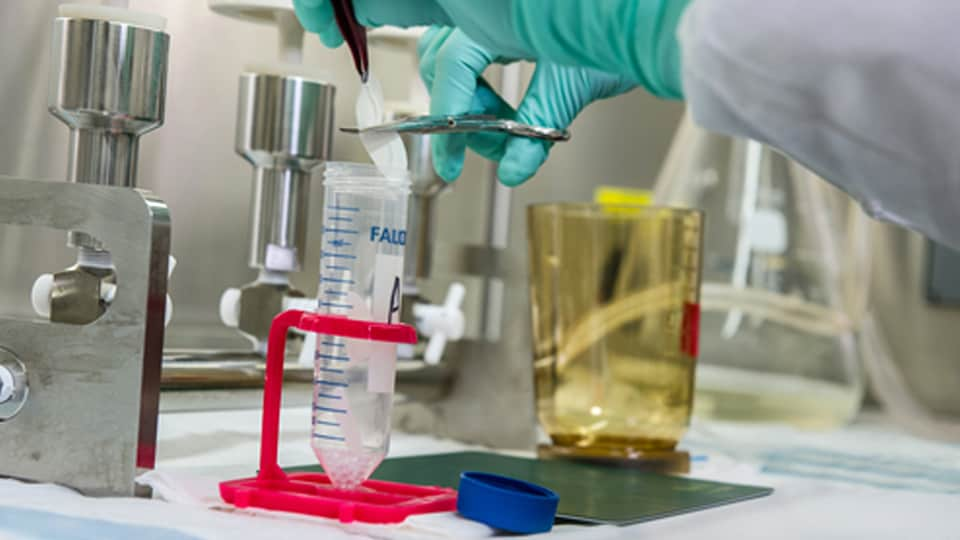At a glance
Facilities may collect, use, or store polioviruses to serve critical functions, but they pose a risk for re-introduction of poliovirus into communities after eradication. These facilities should identify, destroy, transfer, and contain IM and PIM to reduce the risk of polioviruses being released where they are worked with or stored.

Overview
The U.S. National Authority for Containment of Poliovirus (U.S. NAC) is responsible for implementing a poliovirus containment plan in the United States. The U.S. NAC helps reduce the risk of polioviruses being released from the facilities where they are worked with or stored.
Facilities that collect, use, or store polioviruses serve critical national and international functions. This includes public health laboratories, vaccine producers, research laboratories, clinical laboratories, storage facilities, environmental testing laboratories. These facilities perform critical research, vaccine development and manufacturing, clinical and environmental testing.
Some facilities knowingly or unknowingly collect, use, or store poliovirus infectious materials (IM) and potentially infectious materials (PIM) samples. This can include stool, respiratory secretion, concentrated sewage, and wastewater. These facilities risk for re-introducing poliovirus into communities after eradication.
The U.S. NAC is responsible for maintaining a national inventory of facilities. The U.S. NAC provides oversight for safe use or storage of IM and PIM materials.
Poliovirus Containment Strategies
Identify
All facilities will conduct a survey to identify infectious and potentially infectious poliovirus materials.
Destroy
Facilities will destroy (or inactivate) all unneeded or nonessential poliovirus materials.
Transfer
Facilities may need to move samples and scientifically valuable poliovirus materials to poliovirus-essential facilities.
Contain
Facilities retaining any eradicated materials will need to be designated as “poliovirus-essential” facilities (PEFs).
Identify and Report
Facilities should identify and report poliovirus infectious and potentially infectious materials to U.S. NAC using an electronic survey. Facilities that test, extract, handle, or store polioviruses and biological samples from humans, experimentally infected animals, sewage, or environmental waters (e.g., wastewater) should complete the survey.
Definitions and examples of PIM and IM
Refer to the definitions and examples to determine if you possess IM or PIM.
Contact the U.S. NAC
If you think you may have poliovirus IM or PIM, please contact the U.S. NAC.
Destroy or Inactivate Unnecessary or Nonessential Materials
Facilities are strongly encouraged to destroy all samples containing or potentially containing poliovirus that are not deemed essential. Facilities should use a method validated to inactivate poliovirus. Preferred methods of destruction are autoclave or incineration.
Nucleic acid extraction method
Nucleic acid extraction methods often require modification to fully inactivate poliovirus (Honeywood et. al (2021): J Virol Methods. 297:114262. PMID: 34384823.
Non-poliovirus essential facilities can retain nucleic acids extracted using methods validated to inactivate poliovirus under certain conditions.
Transfer
Facilities must report all transfers of poliovirus materials, including extracted nucleic acids, to U.S. NAC. For poliovirus materials subject to containment, facilities must only transfer materials to a registered PEF for storage or additional analysis. Facilities must coordinate transfer agreements with the PEF for scientifically valuable samples before shipment.
Retain & Contain
Facilities that retain polioviruses and potentially infectious materials must contain these materials. All facilities that continue to handle or store polioviruses require certification as a PEF. Facilities that retain poliovirus PIM must implement containment measures.
Poliovirus-essential facilities (PEF)
A PEF is a facility that maintains the ability to work with and/or store infectious and potentially infectious poliovirus materials. These facilities serve critical national and international functions. This includes critical research, vaccine development and manufacturing, clinical and environmental testing.
Facilities performing these functions are limited in number. They must implement stringent biorisk management controls. The controls include increased biosafety and security measures.
PEFs must participate in the national survey, apply for containment certification, and implement U.S. NAC policies.
For more information on Poliovirus Containment in the U.S. and how to become a PEF, please contact the U.S. NAC.
